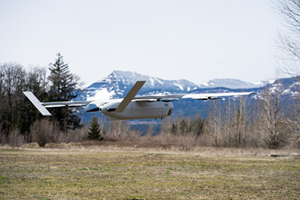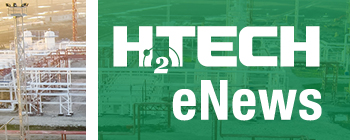News
Heven demonstrates fuel cell unmanned aerial vehicle flight at 12,000 ft
Zepher Flight Labs (ZFL), a Heven company, announced that its H2 fuel cell-powered Z1 successfully demonstrated a vertical takeoff at maximum takeoff weight (MTOW), followed by a continuous 11,000-foot climb to a density altitude (DA) of 12,000 feet during the intelligence, surveillance, and reconnaissance (ISR) mission phase. Part of Heven's next-generation portfolio, the Z1 is a Group II H2-powered, vertical takeoff and landing (VTOL) unmanned aerial vehicle (UAV). The milestone highlights the system's capability to perform heavy, high, and difficult flights. During the flight, the aircraft maintained a strong ascent and full system integrity up to the 12,000-foot airspace ceiling.
The Z1 is engineered for endurance, flexibility, and real-world impact. With more than 10 hours of flight time and modular payload integration, it's built to serve across mission sets—from ISR to disaster response to contested logistics.
The flight is part of an ongoing test campaign designed to extend the Z1's performance envelope under increasingly demanding conditions. In close coordination with Army Research Labs, ZFL continues to pursue a target ceiling of 20,000 feet, with development efforts guided by a commitment to rigorous, data-driven progress.
"We view this achievement not as a final benchmark, but as one more data point along the path of innovation," said Michael Buscher, President of U.S. Operations for Heven. "We're focused on building a platform that performs when it matters most, and that means validating every element."
Heven's continued expansion in the U.S. is being led by Buscher and reinforced by strategic partnerships, including with Mach Industries to scale domestic production.
The milestone also arrives at a pivotal moment for the U.S. drone industry. Last week, Secretary of Defense Pete Hegseth signed a policy memo eliminating outdated restrictions that had long impeded access to critical technologies. The move, aimed at accelerating deployment of domestically produced systems, is reshaping the innovation landscape – creating new momentum for platforms like the Z1 and reinforcing the strategic value of H2-powered drones.
"This flight is a powerful demonstration of our mission-first design approach," said Jake Allen, Chief Engineer at ZFL. "Our customers don't want to choose between altitude, range, or payload – they need an aircraft that delivers all three, seamlessly. That's exactly what we've built."


